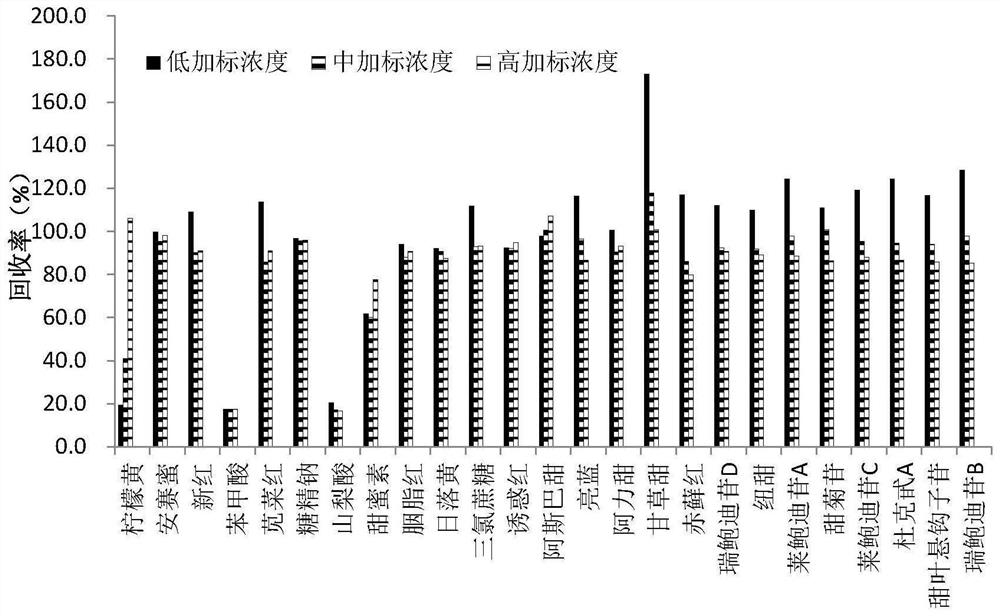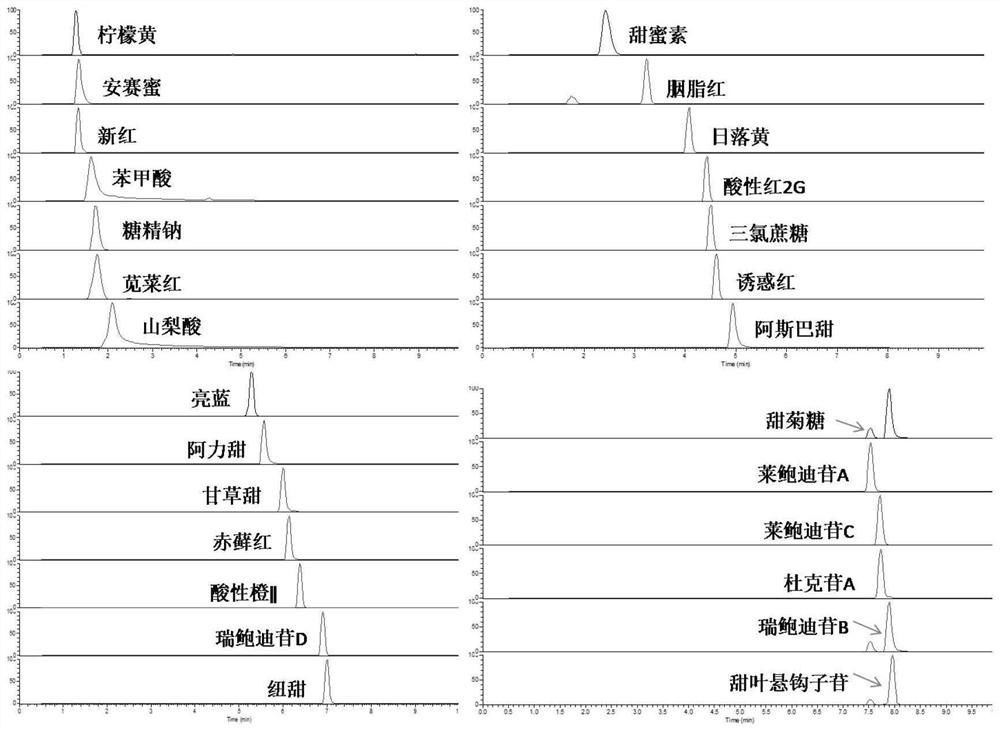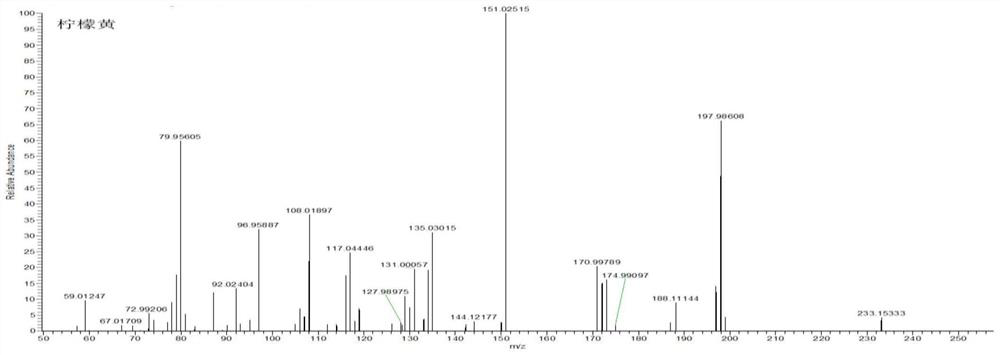Method for detecting and screening exogenous risky substances in wine and application of method in detection
A detection method and wine technology, which can be applied to measurement devices, instruments, scientific instruments, etc., can solve the problems of low detection efficiency, few analyzed varieties, and difficulty in meeting the needs of qualitative and quantitative rapid detection, so as to improve the screening efficiency and target species types. The effect of many, short analysis time
- Summary
- Abstract
- Description
- Claims
- Application Information
AI Technical Summary
Problems solved by technology
Method used
Image
Examples
Embodiment 1
[0038] Example 1 Determination of exogenous risk substances in wine using chromatographic column (ThermoHypersil GOLD aQ)
[0039] experimental method:
[0040] 【Preparation of standard solution】
[0041] Accurately weigh 0.1000g of 27 standard substances into 100mL brown volumetric flasks, dissolve them with ultrapure water and make up to 100mL, prepare 1000mg / L standard stock solutions, and store them in a refrigerator at 4°C.
[0042] 【Sample pretreatment】
[0043] Take 100 μL wine sample into a 2 mL PV centrifuge tube, add 900 μL ultrapure water, mix well, centrifuge at 12000 rpm / min at 4 °C for 10 min, absorb the supernatant, and pass through a 0.22 μm microporous membrane.
[0044] 【Instrumental Analysis】
[0045] Perform ultra-high performance liquid chromatography-quadrupole electrostatic field orbitrap high-resolution mass spectrometry analysis and detection.
[0046] The ultra-high performance liquid chromatography conditions are: Thermo’s Hypersil GOLD aQ (150×2...
Embodiment 2
[0073] The influence of the selection of embodiment 2 different chromatographic columns on analytical effect
[0074] 27 target compounds from medium polarity to polarity, the present invention compares ZORBAX SB-C18 (2.1×100mm, 1.8μm), ACQUITY UPLC HSS T3 (2.1×100mm, 1.8μm), Hypersil GOLD aQ (150×2.1mm , 1.9μm) 3 kinds of chromatographic columns on the resolution, response value, peak shape, etc. of the target compound.
[0075] The chromatographic column is as follows, and the rest of the experimental steps are the same as in Example 1.
[0076] Column 1: ZORBAX SB-C18 (2.1×100mm, 1.8μm)
[0077] Column 2: ACQUITY UPLC HSS T3 (2.1×100mm, 1.8μm)
[0078] Column 3: Hypersil GOLD aQ (150×2.1mm, 1.9μm)
[0079] It was found that the concentration of natural sweeteners was higher than 100 μg / L, and the peaks on the ACQUITY UPLC HSS T3 chromatographic column bifurcated; when ZORBAX SB-C18 was used, the peak shape and retention were poor due to the high polarity of preservatives...
Embodiment 3
[0080] The impact of different dilution factors of embodiment 3 on the analysis effect
[0081] The influence of different dilution multiples on the analysis effect was analyzed, the dilution multiples are as follows, and the rest of the experimental steps are the same as in Example 1.
[0082] Dilution factor 1: Dilute 5 times with ultrapure water
[0083] Dilution factor 2: Dilute 10 times with ultrapure water
[0084] Dilution factor 3: dilute 20 times with ultrapure water
[0085] In this experiment, the influence of three different dilution factors on the analysis effect of the target was investigated, such as Figure 31 . If the dilution factor is too small, the content of interfering substances in the wine is high, and there is some interference to the target substance, resulting in a high or low recovery rate; if the dilution factor is too large, the target substance will be diluted, the peak shape will become poor, and the recovery rate will be unsatisfactory . W...
PUM
 Login to View More
Login to View More Abstract
Description
Claims
Application Information
 Login to View More
Login to View More - R&D Engineer
- R&D Manager
- IP Professional
- Industry Leading Data Capabilities
- Powerful AI technology
- Patent DNA Extraction
Browse by: Latest US Patents, China's latest patents, Technical Efficacy Thesaurus, Application Domain, Technology Topic, Popular Technical Reports.
© 2024 PatSnap. All rights reserved.Legal|Privacy policy|Modern Slavery Act Transparency Statement|Sitemap|About US| Contact US: help@patsnap.com










